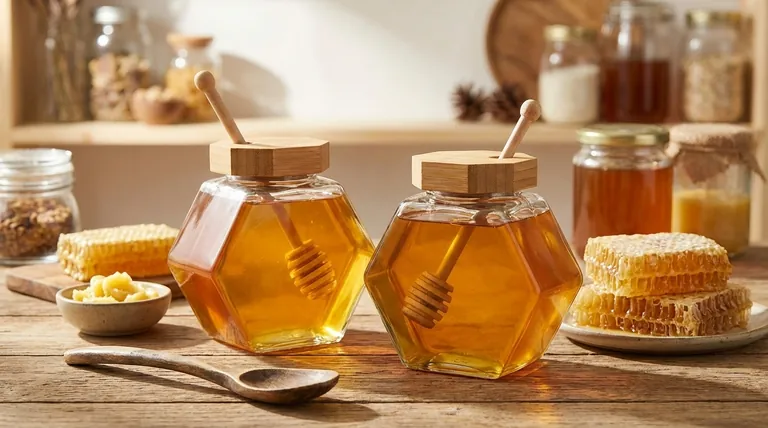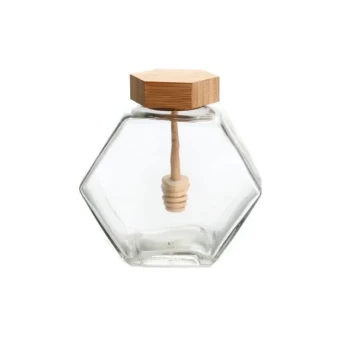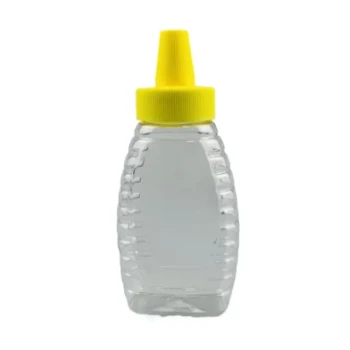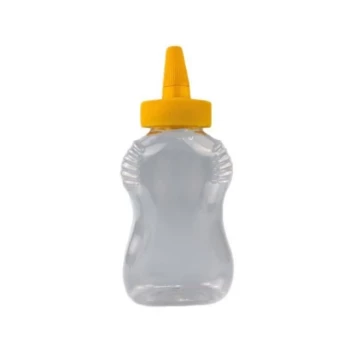For long-term storage and purity, the best container for honey is a glass jar with a tight-fitting, airtight lid. This combination is ideal because glass is non-reactive and impermeable, ensuring the honey's flavor and quality remain unchanged over time. While glass is preferred, food-grade plastic containers are also a safe and practical alternative, especially for short-term use.
The goal of storing honey is not just containment; it's preservation. The ideal container must protect the honey from its three primary enemies: air, moisture, and light, which can degrade its flavor, color, and nutritional value.

Why the Right Container is Crucial
Honey is a remarkably stable food, but its quality can be compromised by improper storage. The container you choose plays a direct role in protecting its delicate characteristics.
Preventing Oxidation and Flavor Contamination
Honey is naturally acidic. When stored in containers made of certain materials, especially metal, this acidity can cause oxidation.
This reaction can leach metallic flavors into the honey, altering its taste and potentially compromising its safety. Glass is completely inert, meaning it will never react with the honey or impart any off-flavors.
Shielding from Moisture and Fermentation
An airtight seal is non-negotiable. Honey has a low water content, which is why it's so resistant to spoilage. However, it is also hygroscopic, meaning it readily absorbs moisture from the air.
If a container is not sealed properly, the honey can absorb enough moisture to raise its water content. This creates an environment where dormant yeast can become active, leading to fermentation.
Protecting Against UV Degradation
Direct sunlight and UV rays can be detrimental to honey. Exposure to light can darken the honey's color and degrade some of its beneficial enzymes and antioxidants over time.
Storing honey in a dark place is essential. Opaque or dark-colored containers, such as amber glass, offer an additional layer of protection against light damage.
Comparing Your Primary Options: Glass vs. Plastic
While other materials should be avoided, both glass and food-grade plastic have their place in honey storage. The choice often comes down to storage duration and convenience.
The Case for Glass Jars
Glass is the gold standard for long-term storage. Its non-porous and impermeable nature provides a perfect barrier against moisture and oxygen.
Because glass is inert, you can be certain that no chemicals will leach into your honey. It also beautifully showcases the honey's natural color and clarity.
The Practicality of Food-Grade Plastic
Food-grade plastic containers are lightweight, shatter-resistant, and often more cost-effective. Squeeze bottles, for example, offer unmatched convenience for daily use.
It is critical to ensure the plastic is specifically food-grade (like PET, HDPE, or PP) and BPA-free. While excellent for short-to-medium-term storage, some plastics may allow for microscopic air exchange over very long periods, which could slightly alter the honey's quality.
Understanding the Trade-offs and Common Mistakes
Choosing the right material is only half the battle. Avoiding common mistakes is just as important for preserving your honey.
The Mistake of Using Metal Containers
Never store honey in non-food-grade metal or reactive metal containers. As mentioned, the honey's acidity will cause the metal to oxidize, ruining the flavor and rendering it unsafe to eat. The only exception is stainless steel, which is often used in processing equipment but is less common for consumer storage.
The Importance of a Tight Seal
A loose-fitting lid is one of the most common points of failure in honey storage. Always ensure your lid is screwed on tightly to create an airtight seal. This simple step is your primary defense against moisture absorption and fermentation.
Beyond the Container: The Role of Location
Even the perfect container cannot protect honey from extreme temperatures. Store it at a stable room temperature, ideally between 65°F and 75°F. A cool, dark pantry or cupboard is a perfect location. Avoid placing it near a stove or on a sunny windowsill.
Making the Right Choice for Your Honey
Your ideal container depends on how you plan to use and store your honey.
- If your primary focus is long-term preservation and purity: A glass jar with a tight-fitting, airtight lid is the undisputed best choice.
- If your primary focus is convenience for daily use: A food-grade, BPA-free plastic squeeze bottle offers practical, shatter-resistant storage.
- If you want to maximize protection against all elements: An opaque or amber-colored glass jar provides the best defense against both air and light.
Ultimately, protecting honey from air, moisture, and light is the key to preserving its natural quality for years to come.
Summary Table:
| Container Type | Best For | Key Advantage | Key Consideration |
|---|---|---|---|
| Glass Jar | Long-term storage, purity | Non-reactive, impermeable, protects flavor | Can be heavy, breakable |
| Food-Grade Plastic | Short-term, daily use | Lightweight, shatter-resistant, convenient | Ensure BPA-free; not ideal for very long-term |
Protect Your Harvest with Professional-Grade Storage Solutions
As a commercial beekeeper or distributor, the quality of your honey is your reputation. Proper storage is critical for maintaining that quality from the hive to the customer. HONESTBEE supplies the durable, reliable beekeeping equipment and supplies you need for efficient, large-scale operations.
We understand the challenges of commercial honey storage and can provide bulk containers and equipment designed for purity and longevity. Let us help you safeguard your product.
Contact HONESTBEE today to discuss wholesale solutions for your apiary or distribution business.
Visual Guide

Related Products
- Hexagonal Glass Honey Jar with Wooden Lid Integrated Dipper Elegant Functional Storage
- Hexagonal Glass Honey Jars with Metal Lug Caps Elegant Versatile Packaging
- Classic Drum Shaped Glass Honey Jar with Airtight Lid
- Food Grade Plastic Honey Bucket Pail for Beekeeping
- Inverted Squeezable Honey Jar with No Drip Flip Top Cap for Easy Pouring
People Also Ask
- What types of containers are ideal for storing liquid honey? Preserve Quality with Glass or Plastic
- How should honeycomb be stored? Preserve Its Delicate Flavor and Texture
- What is the best container to store honey long term? Preserve Flavor & Quality for Decades
- How long can you store honey in a 5 gallon bucket? Preserve Quality & Safety for Decades
- Can you store honey in a plastic bucket? Yes, with the right food-grade HDPE.



















